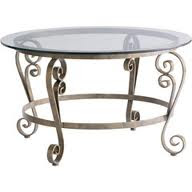Over the years, I have collected quite an assortment of reference guides for my clients. Many of them file these 'sheets' in a three ring binder for their reference on future projects . I thought that this blog might be a great way to share some of these reference 'sheets' with you, too!

The first thing you need to do is create an initial plan. This initial plan should contain the following four steps.
STEP NUMBER ONE: Create a budget
 Figure out what the maximum amount of money you have available for the upcoming project. This step is often overlooked. Once you commit to the budget, you can then make clear decisions concerning what will be done when. Your money will control how much change you are able to accomplish. Be perfectly honest with yourself here.
Figure out what the maximum amount of money you have available for the upcoming project. This step is often overlooked. Once you commit to the budget, you can then make clear decisions concerning what will be done when. Your money will control how much change you are able to accomplish. Be perfectly honest with yourself here.STEP NUMBER TWO: Make a list of what you want done
This might sound simple, but it requires some discipline. Pictures help in this process. Select photographs from magazines and catalogs that illustrate design elements, furniture choices, color preferences, woodwork, etc.
Make sure your list contains realistic priorities. Indicate the absolute musts. Keep in mind that you should work in some type of order. Don't organize projects such that workmen walk through or pass rooms or hallways that were just finished! They could ruin brand new work and then you have to start over again! Just use common sense.
Make sure your list contains realistic priorities. Indicate the absolute musts. Keep in mind that you should work in some type of order. Don't organize projects such that workmen walk through or pass rooms or hallways that were just finished! They could ruin brand new work and then you have to start over again! Just use common sense.
List priorities with each project or room. Keep in mind that it is easy to add an area rug, furniture or window coverings, but hard to change wallpaper or permanent fixtures.
STEP NUMBER THREE: Once you have your budget and your realistic wish list - It's time to call a professional
 You need to feel comfortable with professionals. Ask them questions. Talk in great detail about the fees. If you think you will be more comfortable, get all points in writing. Ask the professional for a written proposal regarding their scope of work. Find out just what they will be doing to earn their fee. A true professional will not get defensive at all with this procedure. If they do, you need to find someone else to work with! Step Number Three should be followed whether you are looking for an Interior Designer or a Licensed Contractor.
You need to feel comfortable with professionals. Ask them questions. Talk in great detail about the fees. If you think you will be more comfortable, get all points in writing. Ask the professional for a written proposal regarding their scope of work. Find out just what they will be doing to earn their fee. A true professional will not get defensive at all with this procedure. If they do, you need to find someone else to work with! Step Number Three should be followed whether you are looking for an Interior Designer or a Licensed Contractor.And last but certainly not least – STEP NUMBER FOUR on your planning checklist: Don't go over budget! ...Need I say more?
What's on your Design Wish List?












































